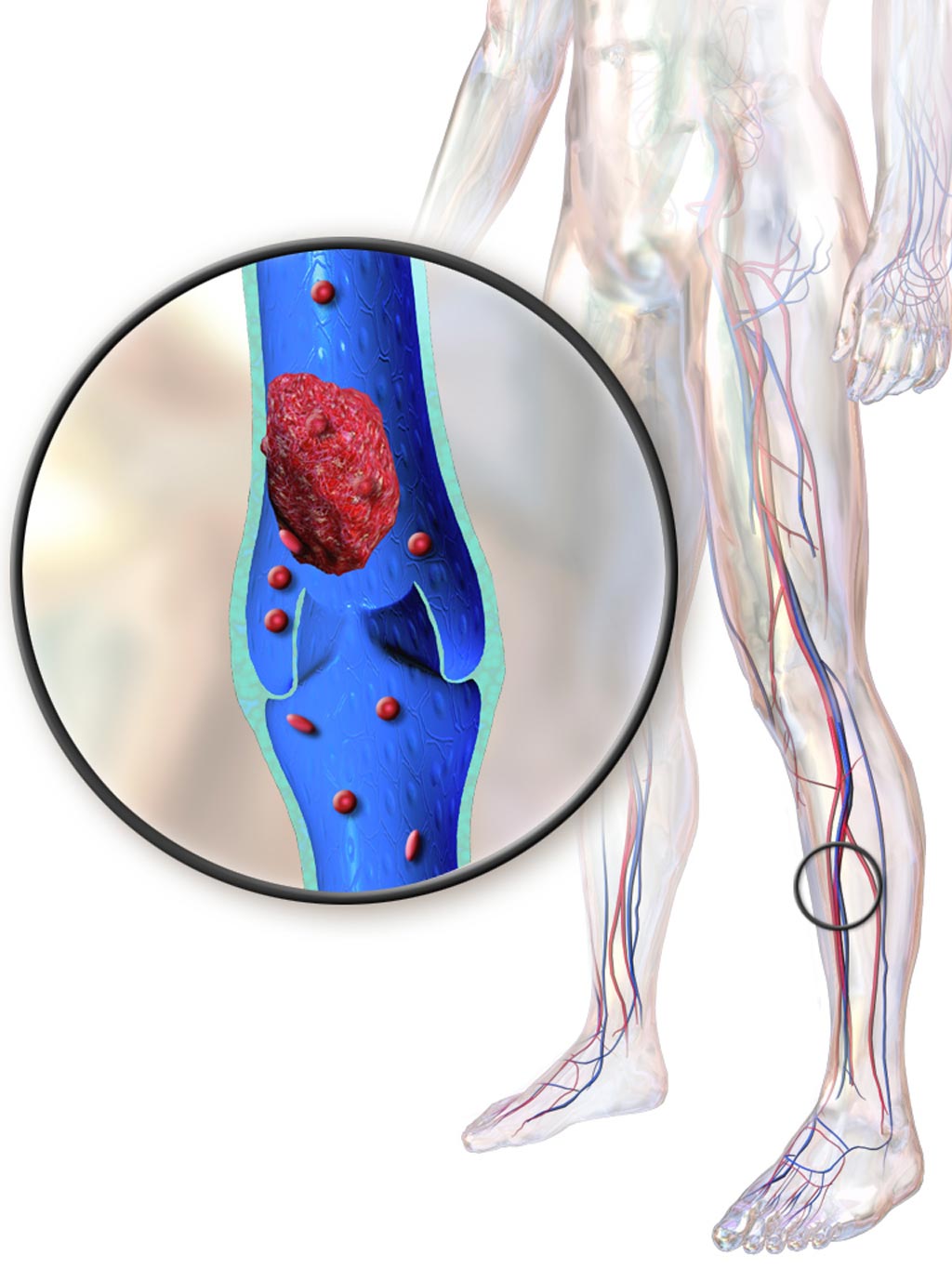Rapid Method Suggested for Diagnosis of DVT
By LabMedica International staff writers
Posted on 03 Sep 2018
A simple blood test has been proposed as an alternative to the fairly costly and time intensive ultrasound procedure for diagnosis of deep vein thrombosis (DVT).Posted on 03 Sep 2018
Investigators at the University of West Virginia (Morgantown, USA) have suggested that measuring the level of D-dimer protein in a patient’s blood may accurately predict whether a time-intensive ultrasound is warranted.

Image: An illustration depicting a deep vein thrombosis (Photo courtesy of Wikimedia Commons).
D-dimer (DD) protein is a fibrin degradation product fragment present in the blood after a blood clot is degraded by fibrinolysis. It is so named because it contains two D fragments of the fibrin protein joined by a cross-link. D-dimer concentration may be determined by a blood test to help diagnose thrombosis. Since its introduction in the 1990s, it has become an important test performed in patients with suspected thrombotic disorders. While a negative result practically rules out thrombosis, a positive result can indicate thrombosis but does not rule out other potential causes. Its main use, therefore, is to exclude thromboembolic disease where the probability is low.
The DD level combined with the pretest Wells criteria probability (WCP) score can safely exclude DVT. The objective of the current study was to examine the correlation between DD results alongside WCP score with findings on venous duplex ultrasound (VDU).
To this end, the investigators initially reviewed the medical records of 360 patients who, over the course of one month, visited an emergency room with complaints of leg swelling and pain. In a follow-up study, they evaluated the results for 1,670 such patients.
Results revealed that all of the patients with elevated DD levels were eventually diagnosed with DVT, but that none of patients with normal levels were. In contrast, only 14% of patients who underwent ultrasound imaging tested positive for DVT.
“It is a very simple sample of blood, which is sent to the lab. And usually in 15 or 20 minutes, you have significant information that can help you take good care of the patients,” said senior author Dr. Albeir Mousa, professor of vascular surgery at West Virginia University. “And you can send patients home quicker, with less demand on the hospital staff and the institution, yet increase patient satisfaction. Usually waiting for a venous ultrasound would be a matter of three, four, five hours. With the D-dimer test, it is a few minutes and you are done.”
The D-dimer study was published in the July 18, 2018, issue of the Annals of Vascular Surgery.
Related Links:
University of West Virginia








 (3) (1).png)




